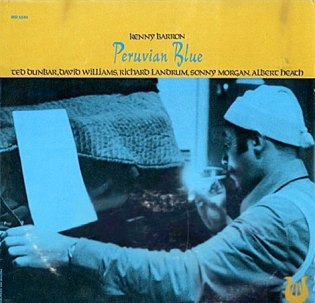WFMU continues to mine the audio motherlode….
 Ada Rave Cuarteto ~ “La Continudad”
Ada Rave Cuarteto ~ “La Continudad”
(Free download courtesy of Pan y Rosas Discos)
Rara Avis: Ada Rave
“A quartet of improvisers and jazzniks out of Argentina. The quartet began playing in early 2009 as trio before adding a guitar/electronics to the mix in early 2010. Their inspiration comes from the language of jazz, free improvisation and out rock of the ’60s and ’70s. They blend all of these things as a way of reaching their objective – improvisation! Improv as a means of composition and improv as the composition itself. They create diverse spaces, sensory forms, movements, instances and related sounds all the while projecting their own voice and collective identity.” (Description from Pan y Rosas)
 Johnny Colón ~ “Boogaloo ’67”
Johnny Colón ~ “Boogaloo ’67”
(Blog: Blue Beat in My Soul)
No Sophmore Jinx
“Johnny Colón is the most exciting new star on the Latin scene today. I am proud of playing a small part in his success. I was the first D.J. to play his first hit album Boogaloo Blues. I flipped when I heard it and immediately signed him for the Village Gate. He broke it up, and the rest is history.” (Symphony Sid Torin, from the liner notes)
 Ghetto Brothers ~ “Power-Fuerza”
Ghetto Brothers ~ “Power-Fuerza”
(Blog: Resin Hits)
Brothers Gonna Work It Out
“This album contains a message; a message to the world, from the Ghetto Brothers. The Ghetto Brothers, a community organization dedicated to bridging the ever-increasing gap that exists between society and minority groups, believe music to be the common language of the world. Through music, they are able to inform society of the plight of the ‘little people’ in their quest for recognition. Therefore, the music of the Ghetto Brothers serves as a way of communication. If the Ghetto Brothers’ dream comes true, the world will learn that the ‘little people’ wish to be acknowledged; wish to be properly educated in order for them to pass on their knowledge to their children and proudly inform them about their heritage and culture, and be a functioning part of the growth of America. If the Ghetto Brothers’ dream comes true, the ‘little people’ will be ‘little people’ no more, and make their own mark in this world. Listen to the Ghetto Brothers…….and take heed.” (From the dust jacket of Power-Fuerza [Salsa, 1971])
 2 Pacho Galán ~ “El Rey del Merecumbé”
2 Pacho Galán ~ “El Rey del Merecumbé”
(Blog: El Stinkeyes)
Merengue and Cumbia Had a Baby and Named it Merecumbé
“The maestro Pacho Galán had many facets to orchestrate the different forms, using saxophones, trumpets, trombones, clarinets, piano, percussion, violins, flutes, singers, etc. Instruments where reloaded his musical structure within the context of most of his arrangements of popular music were the saxophone and percussion instruments, having these special participation within each piece of music. In this way he managed to create a sound identity and personal style, then continue adding the other instruments that made up his orchestra in their own style. The merecumbé is a faithful representation of these concepts.” (Google translated, from Biblioteca Luis Ángel Arango)
 De Kalafe e A Turma~ “Guerra” / “Mundo Quadrado”
De Kalafe e A Turma~ “Guerra” / “Mundo Quadrado”
(Blog: Trackfinder Brazil)
Such Watch!
“De Kalafe ou Denisse De Kalafe as she is known now in Latin America, was born in Ponta Grossa, Paraná State (Brazil). She started her career on the second half of the 1960s, with the group the Turma. They released a single, now rare, with the Brazilian psychedelic rock songs “Guerra” and “Mundo Quadrado,” both composed by Arnaldo Saccomani, who later became a respected producer in Brazil. “Guerra” was a local hit in São Paulo. After the second single, which contained the cover “Bang Bang” from Sony and Cher, the band quit. De Kalafe never liked wearing shoes and used to perform bare footed, which didn’t please the audience those times. She was also known by her independent spirit and activism. Her songs were hippie style and anti-militarist right during the Vietnam War. After not being classified for a Song Festival by the end of the 1960’s, she moved to Guadalajara, Mexico, and there she became known as Denisse De Kalafe, and she is now among the superstars in Latin America, while in Brazil she is completely unknown.” (Commentary by Trackfinder Brazil)








 The problem with deeply catholic countries is that people don’t write sweet folk songs about god, they write actual masses. This record is suposed to be played and sung to conduct a typical catholic liturgy. According to the back cover’s text, they wrote it to “look for new paths to express the deepest and richest […]
The problem with deeply catholic countries is that people don’t write sweet folk songs about god, they write actual masses. This record is suposed to be played and sung to conduct a typical catholic liturgy. According to the back cover’s text, they wrote it to “look for new paths to express the deepest and richest […]

 The Meyer brothers in 1909. From left, David Meyer, brother-in-law Abraham Mann, and Louis Meyer. (Courtesy of the author)
The Meyer brothers in 1909. From left, David Meyer, brother-in-law Abraham Mann, and Louis Meyer. (Courtesy of the author)

